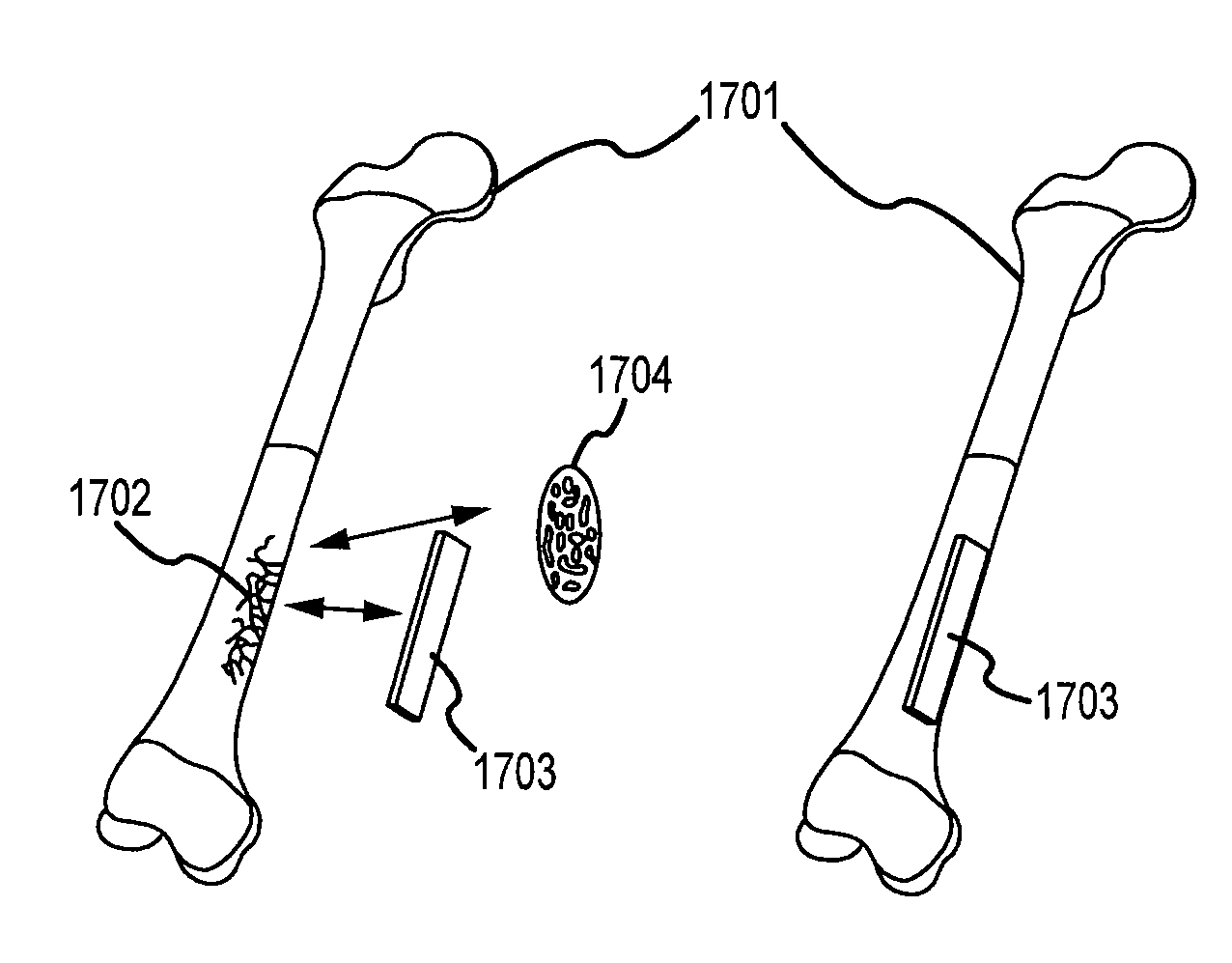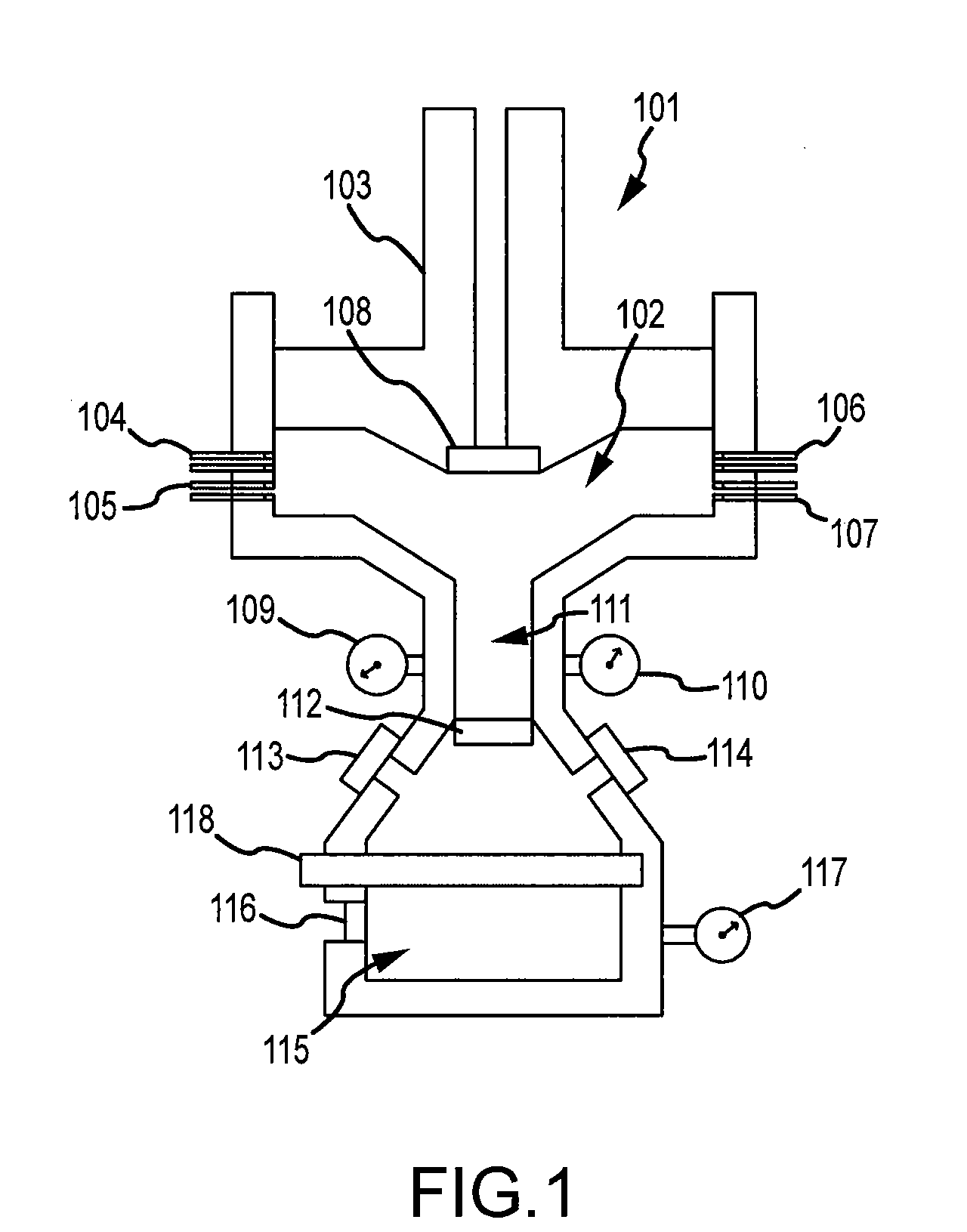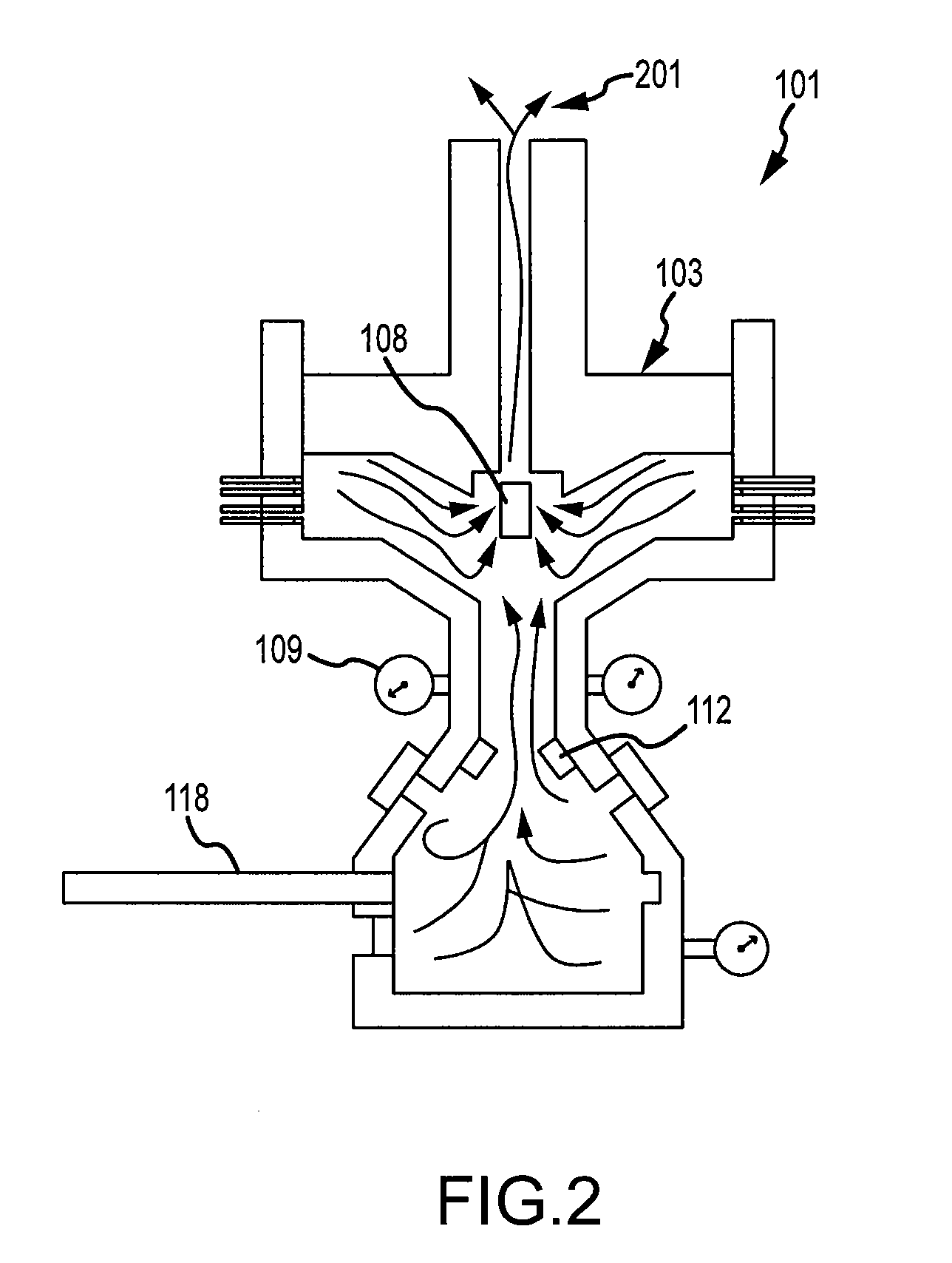Chemical Mechanical Vapor Deposition Device for Production of Bone Substitute Material
a technology of mechanical vapor deposition and bone substitute material, which is applied in the direction of prosthesis, impression caps, applications, etc., can solve the problems of limited availability and risky recovery procedure of autogenous bone, and the risk of viral transmission and immune reaction of allograft bone, and achieve excellent flexural, impact and tensile characteristics, excellent hydrolysis resistance, and excellent tensile properties
- Summary
- Abstract
- Description
- Claims
- Application Information
AI Technical Summary
Benefits of technology
Problems solved by technology
Method used
Image
Examples
Embodiment Construction
[0034]The invention provides production of a bone substitute material using chemical solution spray deposition (CSSD) and isostatic press processes with reinforced plastic fibers, preferably PEEK, resulting in bone substitute having composite laminated structures with controlled porosity. In order to increase toughness and elastic behavior of bone substitute material comparable to natural bone, the composite laminar structure is introduced with reinforced polymer fibers. In order for bone substitute material to have high compressive strength in load bearing applications, calcium phosphate mineral is deposited and forms a layer with an option of inclusion of calcium carbonate mineral into the calcium phosphate mineral. Another option is that calcium carbonate forms one or more separate thin layers between the calcium phosphate layers. The high compressive strength of calcium carbonate material compared to calcium phosphate can provide additional rigidity of the bone substitute materi...
PUM
| Property | Measurement | Unit |
|---|---|---|
| particle size | aaaaa | aaaaa |
| diameter | aaaaa | aaaaa |
| composition | aaaaa | aaaaa |
Abstract
Description
Claims
Application Information
 Login to View More
Login to View More - R&D
- Intellectual Property
- Life Sciences
- Materials
- Tech Scout
- Unparalleled Data Quality
- Higher Quality Content
- 60% Fewer Hallucinations
Browse by: Latest US Patents, China's latest patents, Technical Efficacy Thesaurus, Application Domain, Technology Topic, Popular Technical Reports.
© 2025 PatSnap. All rights reserved.Legal|Privacy policy|Modern Slavery Act Transparency Statement|Sitemap|About US| Contact US: help@patsnap.com



